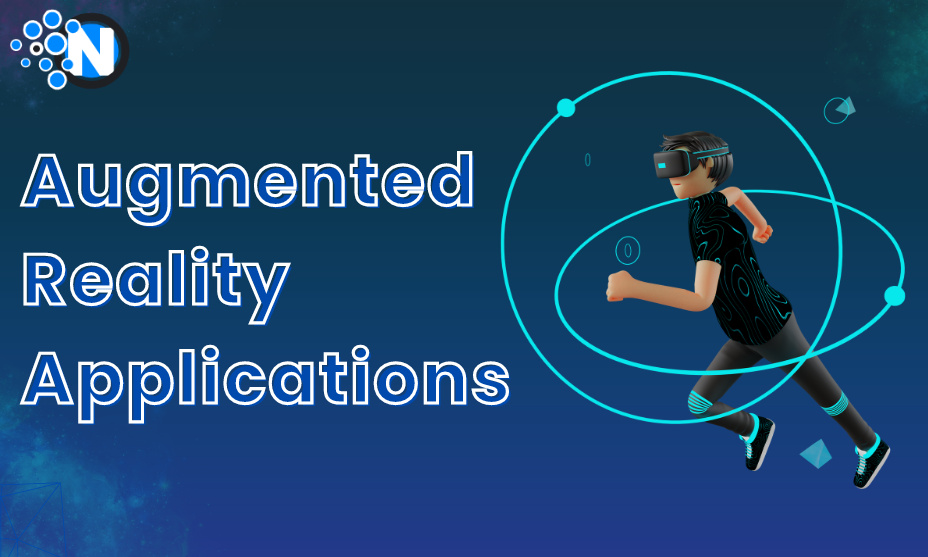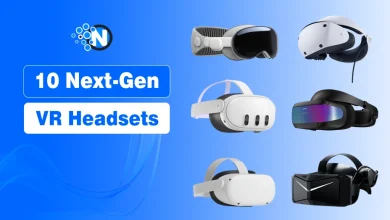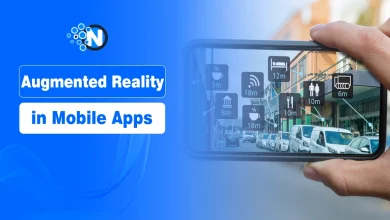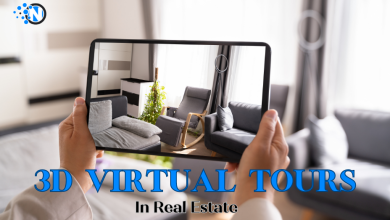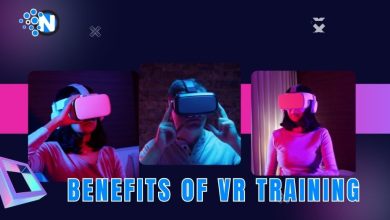Unleashing the Potential of Next-Generation Augmented Reality Applications
Just a few years ago, we marveled at the possibilities of augmented reality – how it could overlay virtual objects onto our physical world, transforming our surroundings into a playground of digital wonder. But now, with a variety of AR applications available, a revolution is upon us, poised to shatter the limitations of what we thought possible and open new doors of opportunity.
Imagine walking through a city where historical events unfold before your eyes, as virtual characters reenact pivotal moments with stunning realism. Picture stepping into a classroom where complex concepts are visualized and brought to life, making learning an immersive adventure. Envision trying on clothes, testing furniture, or even exploring distant planets, all from your own home, thanks to hyperrealistic simulations.
Let’s dive into the cutting-edge functionality and capabilities of augmented reality apps.
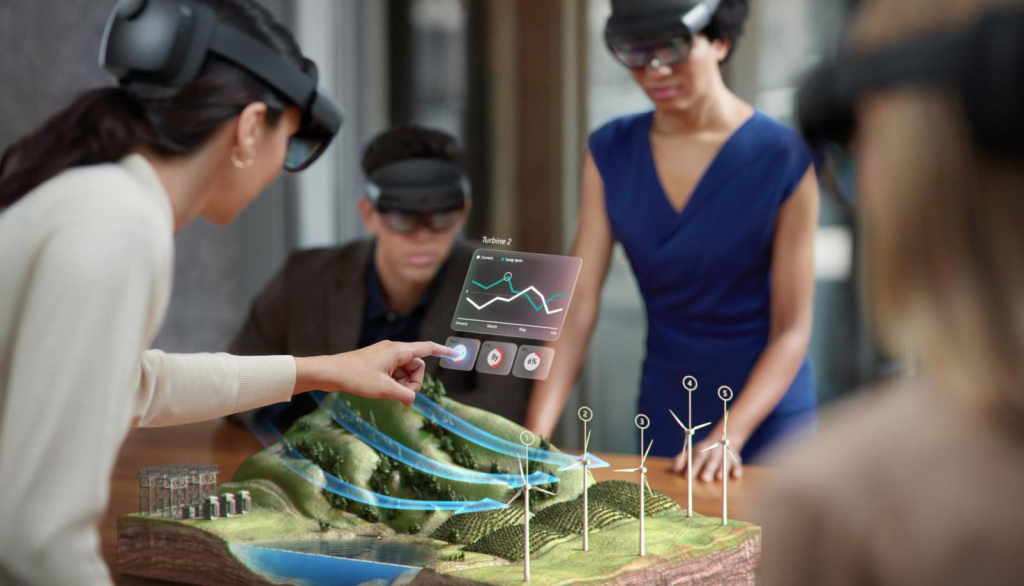
Exploring the Power of Next-generation AR Apps
Augmented reality app development has ignited a spark of innovation that illuminates the limitless possibilities lying at the intersection of our physical reality and digital imagination.
AR is a catalyst for imagination, enabling us to envision a future where knowledge takes tangible form and fantastical realms materialize before our eyes. It empowers storytellers, educators, and creatives to weave sophisticated narratives, blurring the boundaries between fiction and reality, and captivating people in unprecedented ways.
From healthcare to manufacturing, architecture to engineering, the visionary apps of next-gen AR applications are reshaping the way we work, learn, and solve complex problems. Surgeons can overlay vital information during intricate procedures, enhancing precision and minimizing risks. Engineers can visualize sophisticated 3D models, facilitating efficient design iterations and streamlining manufacturing. Architects and designers can walk clients through virtual buildings, making them explore spaces before they are constructed, saving time, resources, and ensuring customer satisfaction.
However, developers must pay attention to privacy concerns, ethical considerations, and responsible design as they create innovative AR applications.

Spatial Computing: Redefining Interaction With Virtual Objects
The transformative power of spatial computing emerges as a cornerstone, redefining how we handle virtual objects. This technology unlocks a new dimension of immersion, enabling us to manipulate and deal with virtual content in breathtaking ways.
With spatial computing, we can now reach out and touch objects that exist only in the digital realm. So, when you extend your hand, you’ll feel the texture of a virtual sculpture or manipulate complex virtual machinery with precision and ease. The haptic feedback and realistic physics simulations elevate the level of interaction, fostering a sense of presence and agency in our virtual explorations.
This revolutionary technology also allows for dynamic spatial mapping, enabling virtual objects to respond intelligently to their physical surroundings. As we move through our environment, these virtual elements adapt and integrate seamlessly, giving rise to interactive experiences that feel truly grounded in reality.
Spatial computing has the power to transform collaboration and communication. With shared enhanced experiences, individuals from different locations can gather together, dealing with virtual objects and each other in real-time. A team of architects can collaborate on a building design, and each of them visualizes and manipulates virtual blueprints simultaneously, regardless of their physical location.

SLAM: Enabling Real-time Experiences
At the heart of spatial computing lies the powerful technology known as simultaneous localization and mapping, a key enabler of real-time augmented experiences. It serves as the guiding compass, allowing virtual objects to seamlessly integrate with our physical world and ensuring accurate positioning and tracking within the environment.
SLAM acts as a virtual cartographer, continuously mapping the surrounding space while simultaneously localizing the device or user within it. By analyzing sensor data from cameras, depth sensors, and other sources, it constructs a dynamic, digital representation of the environment, understanding its geometry and spatial layout. This real-time mapping enables devices to precisely position virtual content within the physical space, aligning objects with the real-world context.
The remarkable power of SLAM lies in its capacity to precisely trace the device’s movement and update the virtual image of the environment. As we move around the physical world, the sensor data is interpreted to determine changes in position, orientation, and size, to make sure the virtual objects stay in the correct spatial context.

Natural User Interfaces: Connecting Humans and Digital Content
Natural user interfaces transform the way humans interact with digital content. NUIs leverage our natural behaviors and gestures, allowing us to interact with digital content in ways that feel instinctive and effortless. They enable us to interact with virtual objects and environments in a more natural and seamless way by recognizing and responding to our gestures, movements, and even voice commands.
You can interact with virtual items as if they have physical characteristics and can be felt and touched. NUIs let us express ourselves through our gestures and hand movements, creating a more immersive experience and giving us a greater sense of control. We can grasp, rotate, resize, and even throw virtual objects, creating a heightened level of immersion and interactivity.

Use Across Industries
This remarkable new invention can be used for a multitude of purposes. Let’s look at two examples.
Modern Retail and eCommerce: Revolutionary Experience
AR applications are set to completely transform the shopping experience, reworking how we search, communicate with and make decisions about services and products.
Retailers and eCommerce businesses close the digital-physical divide by fostering engaging and tailored experiences for their customers. Consumers can now use innovative augmented reality applications to virtually try on clothes, get a glimpse of how furniture would look in their homes, and preview how makeup will look on their faces. Customers become better informed before making a purchase, leading to greater confidence and fewer returns.
The limitations of physical store spaces are no more relevant. Retailers showcase an extensive virtual inventory that goes beyond the constraints of shelf space. With the help of pioneering mobile applications, customers explore a vast array of products and variations, viewing them from different angles, and even experiencing them in interactive and animated ways.

Augmented Reality Apps in Education and Training: Transforming Learning and Training
The educational landscape is undergoing a profound transformation as well. Augmented reality applications are transforming learning, creating captivating and interactive experiences that go beyond traditional classrooms and textbooks.
AR brings abstract concepts to life, allowing students to visualize complex theories, historical events, or scientific phenomena in a tangible and engaging manner. By overlaying virtual content onto the real world, learners explore and interact with 3D models, simulations, and interactive elements, which fosters deeper understanding and retention of knowledge. This experiential learning not only sparks curiosity and engagement but also helps students develop critical thinking, problem-solving, and collaboration skills.
In vocational training and skills development, this immersive technology is a game-changer. From medical simulations that allow trainee surgeons to practice complex procedures to industrial training that provides a safe virtual environment for hands-on learning, learners acquire practical skills in a risk-free and immersive manner.

The Future of Augmented Reality: Predictions and Exciting Possibilities
As we gaze into the future of augmented reality app development, a world of boundless possibilities unfolds before us. Its transformative impact on various industries, from retail and education to healthcare and entertainment, sets the stage for an exciting and dynamic future.
One of the key predictions for the future is the proliferation of wearable AR devices. Another exciting development on the horizon is the fusion of this technology with others – AI, IoT, 5G, etc. The future also holds immense potential for collaborative and shared experiences. This striking innovation will also empower individuals and organizations to unleash their creativity and storytelling prowess.

